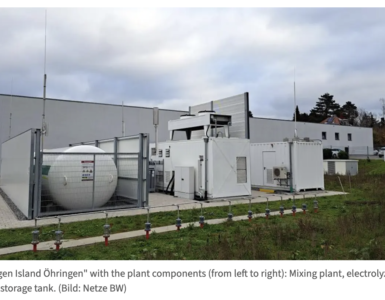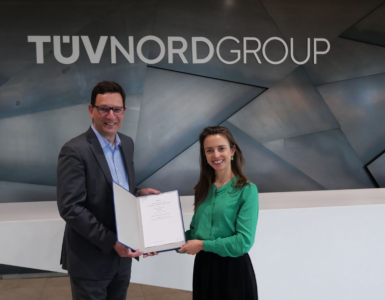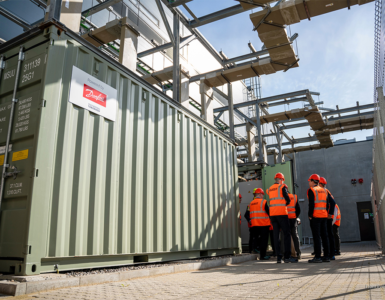Scotland seeks to become hydrogen leader by leveraging vast wind resources – HYCAP.
For a relatively small country, Scotland has huge wind energy resources. While its economy is about 1.2% the size of the Europe Union, its offshore wind potential is between 4% and 6% of Europe’s total.
Used solely to generate electricity, it would have more wind energy than it could use in its domestic economy. But with the help of electrolysers, Scotland can turn much of its renewable energy bounty into clean hydrogen, a resource that can not only be used to decarbonise domestic industry but can be exported by pipeline and ship.
The Scottish government is investing heavily in clean hydrogen – in December 2022, it released its Hydrogen Action Plan with a plan to build 5 GW of clean hydrogen capacity by 2030 (half of the UK’s 10 GW total) and 25 GW by 2045 when it foresees achieving net zero as an economy.
🔥 What about we co-host a webinar? Let's educate, captivate, and convert the hydrogen economy!
Hydrogen Central is the global go-to online magazine for the hydrogen economy, we can help you host impactful webinars that become a global reference on your topic and are an evergreen source of leads. Click here to request more details
Michael Matheson, Scotland’s energy secretary said in the action plan’s launch document, said:
Our priority is to get as much renewable hydrogen into the energy system as quickly as possible, while also supporting the establishment of low-carbon hydrogen production at scale in the 2020s, linked to carbon capture and storage (CCS).
While £80m has been allocated “to support the development of CCUS and CCS-enabled negative emissions technologies in Scotland,” Scotland intends to generate the great majority of its hydrogen from renewable energy, namely wind.
So-called green hydrogen is created by passing water through an electrolyser powered by renewable energy, splitting it into hydrogen and oxygen with no carbon dioxide emissions. Blue hydrogen is made the traditional way, by reforming natural gas, but the carbon emissions are captured for storage or use.
Negative-carbon hydrogen can be produced with biomass or biogas, in which plant matter is used that has already taken carbon dioxide from the atmosphere, which is then stored underground.
In 2022, Scotland awarded leases to 20 offshore wind projects with a combined capacity of 27.6 GW. Added to previous projects, it has a total pipeline of more than 40 GW, one of the largest in the world.
Many of those projects have already indicated they plan to produce hydrogen as part of their plans, whether at sea, to be piped back to shore using existing natural gas infrastructure, or on the mainland.
Scotland is at the cutting edge of hydrogen production innovation, having awarded leases to three “hydrogen focused” floating wind projects totalling 2.8GW in the clearing round of last year’s auctions.
One of the world’s first floating wind hydrogen projects – the Dolphyn project being built by Engie-owned Tractebel – involves taking 2 MW of Scotland’s 50 MW Kincardine array to produce hydrogen that would be piped to Aberdeen from 2024.
According to the Scottish government, domestic demand for clean hydrogen is expected to come from heavy-duty on and off-road transport, shipping, aviation and industrial high temperature heat. They also foresee hydrogen being used in the production of synthetic fuels and for energy storage to increase the flexibility of the grid, as well as in domestic heating.
Scottish Power and low-carbon development firm Storegga said in May last year they’re planning to develop, build and operate green hydrogen production plants across Scotland to feed the country’s whiskey distilleries.
Scotland is also experimenting with hydrogen-powered rail. In September 2022, a former ScotRail train that has been converted to run on hydrogen began trials on the five-mile Bo’ness & Kinneil Railway heritage line near Linlithgow, West Lothian. Hydrogen could be well suited to Highland and other long-distance rural lines where electrification would not be economically viable.
While domestic hydrogen consumption is expected to be considerable, export plans are already beginning to be explored. An international consortium, including Axens, Chiyoda, EnQuest, ERM, Koole Terminals, Port of Rotterdam, Scottish Government, Shetland Islands Council, Storegga and the Aberdeen-based Net Zero Technology Centre, are working on the Liquid Organic Hydrogen Carrier (LOHC) for Hydrogen Transport from Scotland (LHyTS) project that hopes to use nascent LOHC technology to send hydrogen from Scotland to Rotterdam.
In June 2022, Scotland and Germany signed an agreement to explore options for transporting green hydrogen from Scotland to Bavaria.
Scotland may also be part of the AquaDuctus North Sea hydrogen pipeline project, which recently applied for European Commission for Project of Common Interest status. The 400 km pipeline could be fed by Scottish clean hydrogen projects, facilitating exports to Germany and other countries in continental Europe.
Scotland’s hydrogen ambitions will be helped by two of the nation’s ports receiving Green Freeport status from the Scottish and UK governments earlier this month. Inverness and Cromarty Firth Green Freeport and Forth Green Freeport will receive up to £52 million in start-up funding and will benefit from tax reliefs and other incentives.
Other initiatives to boost hydrogen investment include a loosening of planning rules, signed off by MSPs earlier this month, that will make it easier to build renewable energy projects, including wind.
A lot is riding on Scotland’s successful development of a hydrogen economy. The country has benefited from being the centre of the UK’s oil and gas industry for decades, but output has been in decline and use of fossil fuels is being phased out in the race to reach net zero emissions.
Clean hydrogen could provide Scotland with “greatest industrial opportunity since oil and gas,” Energy Secretary Michael Matheson said in October.
READ the latest news shaping the hydrogen market at Hydrogen Central
Scotland seeks to become hydrogen leader by leveraging vast wind resources, January 31, 2023








